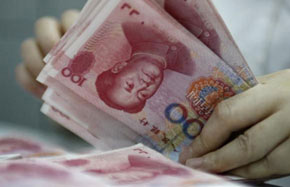B&R Initiative benefits long-term development of ASEAN nations: Economist
KUALA LUMPUR - The importance of the Belt and Road Initiative for the Association of Southeast Asian Nations (ASEAN) countries is evident as infrastructure is a key to boost the competitiveness of the region, said an economist.
"ASEAN developing countries need to invest heavily in infrastructure development in order to boost their competitiveness, so the Belt and Road Initiative helps to provide additional infrastructure financing to accelerate economic development," IHS Markit's Asia-Pacific Chief Economist Rajiv Biswas told Xinhua in an email interview.
Biswas believes it has many positive benefits for the long-term development of ASEAN countries, as the weak infrastructure is a key economic development hurdle for many ASEAN countries.
A recent report by United Nations Conference on Trade and Development showed that ASEAN would need infrastructure investment of 60 billion to $146 billion per annum up until 2025.
China is providing assistance in rail infrastructure projects to many ASEAN countries, including Indonesia, Thailand, Malaysia, Cambodia, the Philippines and Laos.
These include Indonesia's Jakarta-Bandung High Speed Rail link, Malaysia's East Coast Rail, China-Thai high speed railway, and China-Laos railway.
As China has become a world leader in infrastructure development such as for railways and ports, the infrastructure projects being built with Chinese support will have advanced technological standards, Biswas noted.
Meanwhile, improved transport links between ASEAN and China will also help ASEAN manufacturing industry become more closely integrated into the Chinese manufacturing supply chain.
"The rapid growth of China's economy has been a major growth driver for ASEAN over the past two decades as bilateral trade and investment relations have boomed," Biswas said.
This is because the Belt and Road Initiative will improve connectivity and modernize transport links, bringing more exporting ASEAN products to the fast-growing Chinese consumer market.
Biswas said an important factor for the long-term success of the Belt and Road Initiative in ASEAN will be that projects are inclusive of local construction companies, to help build the domestic capacity and technological capabilities of local companies as a win-win partnership.
He cited the new project consortium between Chinese and Indonesian companies to build the Jakarta-Bandung high speed rail as a good example of such a joint partnership.
He opined that it should be the government of the particular ASEAN country to ensure its fiscal responsibility for cooperation and projects under the Belt and Road Initiative.
Proposed by China in 2013, the Belt and Road Initiative aims to build trade and infrastructure networks connecting Asia with Europe and Africa on and beyond the ancient Silk Road routes. It comprises the Silk Road Economic Belt and the 21st Century Maritime Silk Road.
- Standard, ICBC back Chinese firms in Africa's B&R markets
- Private finance called vital for Belt and Road
- As EU looks to Pacific, Belt and Road will enhance cooperation: Former WTO chief
- Belt and Road Initiative will attract more FDI into Sri Lanka: Experts
- Think Tanks Need to Play a Leading Role in Advancing the Belt and Road Initiative

























